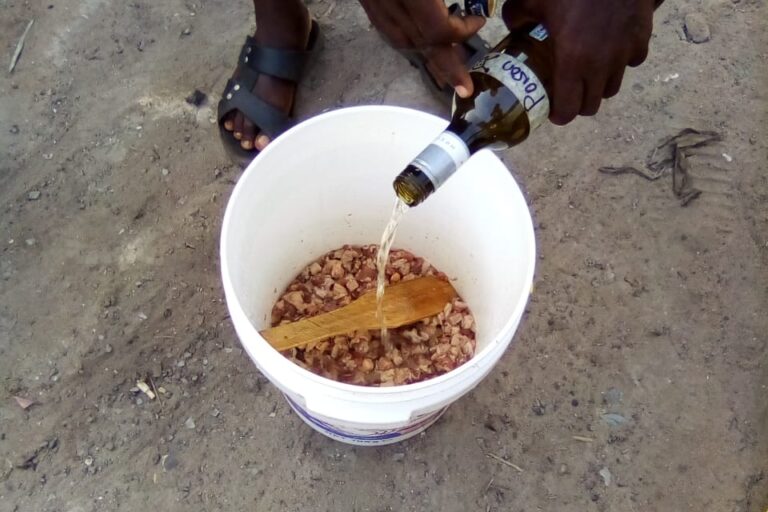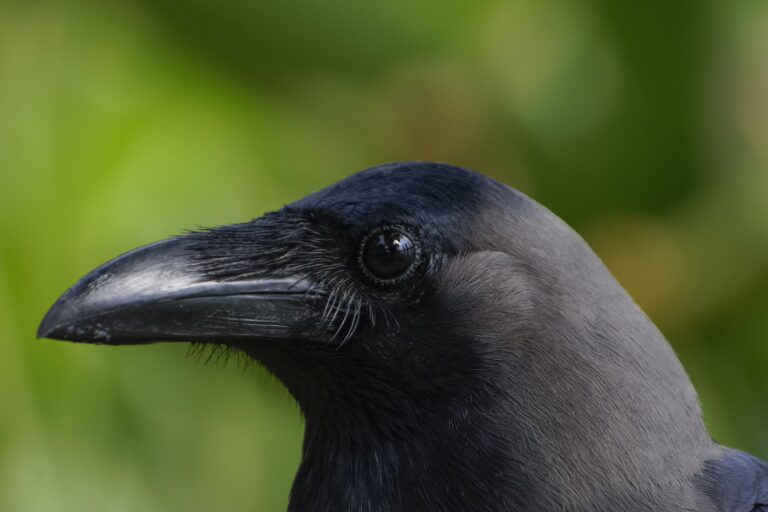- Indian house crows, introduced to East Africa in 1891, have become a major pest in Kenya, threatening native birds, spreading disease, damaging crops, and disrupting tourism.
- Kenya has revived a poisoning campaign using Starlicide, a U.S.-developed bird control poison, after a 20-year ban on its import; conservationists report increased small bird populations in treated areas.
- Experts support the poisoning as necessary, but critics argue for long-term solutions like regional cooperation and improved waste management to limit food sources.
- Conservationists warn the crows could spread further, including to Nairobi, and stress the need for a coordinated approach to control their rapid population growth.
NAIROBI ― Introduced to East Africa in 1891, in Zanzibar, to deal with domestic food waste, Indian house crows are now wreaking havoc in Kenya: killing native small birds, likely spreading disease, damaging food crops, and generally being a nuisance at tourist spots, open-space parties and businesses.
The country is now battling millions of invasive Indian house crows (Corvus splendens), especially in the coastal region popular with tourists, through an intensified campaign of poisoning. This is the first such effort since an initial attempt was aborted two decades ago after regulators banned imports of the poison DRC-1339, better known as Starlicide.
Like many invasive species, the voracious birds have proliferated very fast across Africa, thanks to rising food waste heaps that provide ideal grounds for feeding and breeding.

With no natural predators, the crows have become a serious pest in several countries, including Djibouti and South Africa. A count in the town of Watamu in Kenya’s Kilifi county in January 2024, for instance, estimated there were more than 12,000 crows, according to conservation non-governmental organization A Rocha Kenya. It also estimated there were more than 31,000 of the birds in March 2024 in the town of Malindi, about 20 kilometers (12 miles) away. That was up from just five crows in Watamu and 25-30 in Malindi in 2005, just three years before Starlicide imports were cut off.
In 2022, private landscaping company Little Kenya Gardens (LKG), which holds a monopoly on imports of the poison, brought in a tiny amount — 2.5 kilograms, or 5.5 pounds — of Starlicide for testing purposes, with an eye to reviving the mass poisoning campaign. This was part of the National House Crow Eradication Programme spearheaded by the Kenya Wildlife Service (KWS), which classifies the Indian house crow as an invasive species.
The elimination campaign intensified in 2024 when the country targeted the killing of at least one million of the birds. The goal was also to halt the crows’ spread from the coast into inland tourist areas and the country’s capital, Nairobi.

According to Erick Kinoti, project coordinator at A Rocha, the one million target was very ambitious: “The biggest challenge we are experiencing is the poor disposal of domestic food waste in this region, which makes the birds breed very fast and increase in numbers, thus really frustrating our efforts.”
Through the LKG, he explains, they imported more poison in November last year, which they have not started using as they are still deploying the ones acquired in 2022.
LKG owner Cecilia Ruto says about 2,000 crows were killed in the 2022 trials to test the efficacy of the poison. The poison is entirely processed in the crow’s body before the bird dies, which poses little risk to scavengers feeding on the carcass of the dead crows.

In the U.S., where it was developed more than 50 years ago, Starlicide is registered for the control of birds such as crows, ravens, blackbirds, gulls and magpies that are considered crop pests or that pose a threat to humans or endangered species. The slow-acting poison kills targeted birds within three to 80 hours of consumption, but is said to be nontoxic to nontargeted species.
Since last year, Kinoti, who is leading the current poisoning campaign in partnership with KWS, explains that they organized counts of crow roosts, mapped out bait locations, and gathered data on crow distribution.
It starts with 10-14 days of pre-baiting, in which field officers set out food bait, not poisoned, to accustom the crows to feeding at the bait sites. After this, the actual poisoning begins; Kinoti says the sites are chosen carefully away from human and animal traffic. “It’s an oral poison, so it’s administered by feeding the crows poisoned meat,” he adds. The day after the poisoning, Kinoti explains, a team of collectors is deployed to scout the roosting sites to collect the dead crows.
“Our trained field officers have two main tasks. One is collecting data by counting how many birds feed on the bait, and the second is to chase away any nontarget species that come to the site. So far, we have a visual confirmation that the project is working, [which is an] increase of small bird populations around Watamu and others where poisoning has been carried out. We, however, have a long way to go since we have a huge area to cover regarding the same. We will be conducting roost counts soon to evaluate the number of populations in roosts,” Kinoti tells Mongabay.
“The poisoning program is ecologically friendly because it targets crows, it’s virtually non-toxic to other raptors,” says Shiv Kapila, director of the Naivasha Raptor Centre which is part of the Kenya Bird of Prey Trust. “The benefits of eliminating them outweigh the environmental cost, it is the most humane way of controlling their spread. If the program succeeds, it is a long-term solution to this menace, and we should not be afraid.”

Kapila says that Indian house crows have wiped out populations of native birds, especially weavers, in the Diani area, a popular beach just south of the port city of Mombasa. “We have not seen some of these indigenous birds for a decade now. These birds [crows] are a nuisance … the only benefit they have is to eat rubbish … but they snatch food from visitors, they are noisy … yet a lot of people come to the coast of Kenya for tourism,” according to Kapila.
He adds that it’s important to inhibit their spread to the densely populated Nairobi area, where they could become entrenched and explode in numbers. A study published last year found that crows typically build their nests close to human settlements to improve their access to food and chances of survival.
Paul Gacheru, species and sites Manager at the conservation organization Nature Kenya, says that the Indian house crow will have massive negative impacts on native biodiversity and various sectors of the economy, including tourism.
“Countries need to weigh the cost-benefit analysis of having these crows. As for Kenya, these crows are a menace that requires control,” Gacheru tells Mongabay. “The long-term solution needs to take a regional approach to the control of the crows. There is no need for Kenya to spend millions of shillings controlling the crow while Tanzania is not doing the same. This is because Tanzania will eventually become a source population for the species.”
He also called for measures to improve solid waste management in large urban areas, which would minimize food availability for these scavenging birds.

Banner image : An India house crow (Corvus splendens). Image by GerifalteDelSabana via Flickr (CC BY-SA 4.0).








